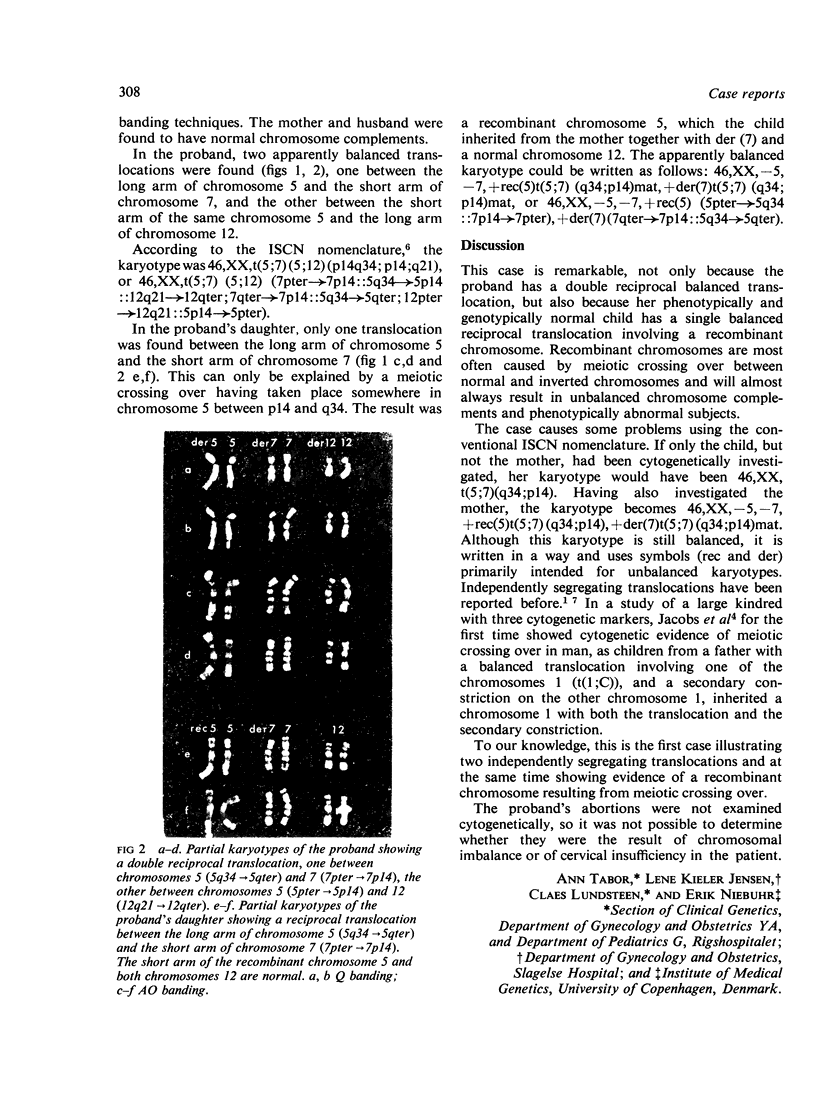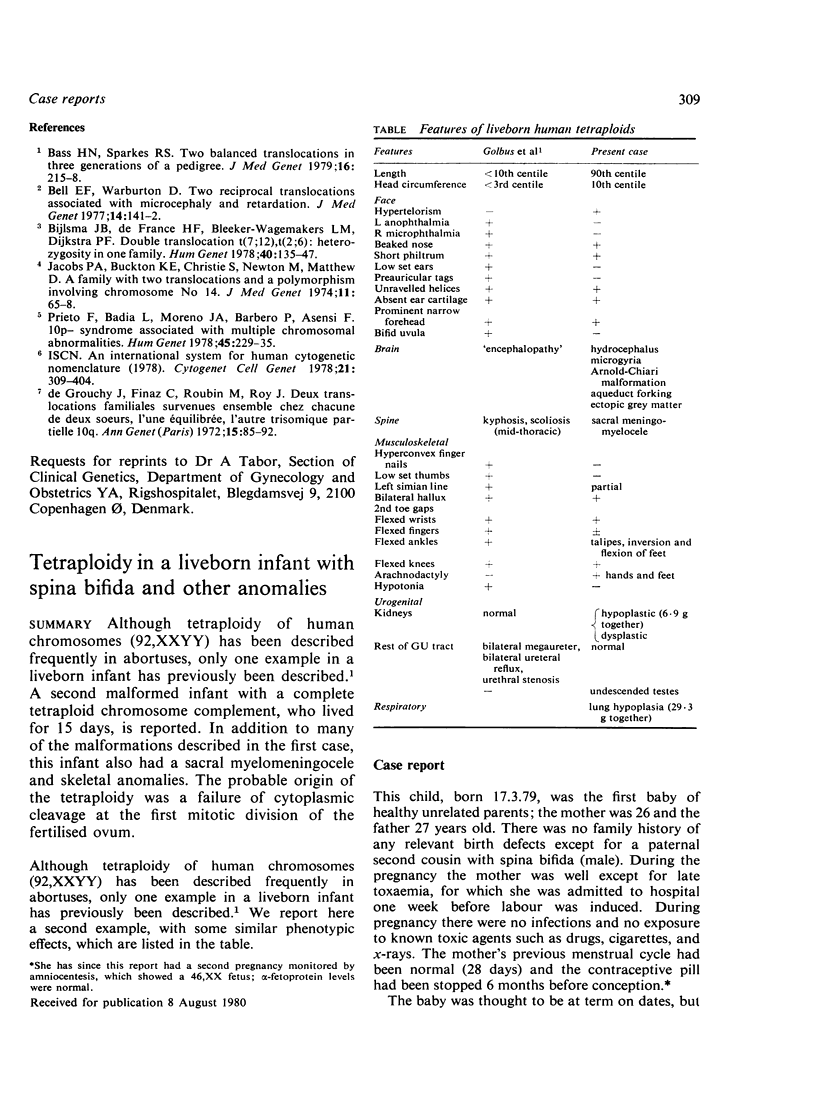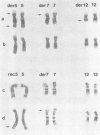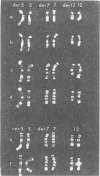Abstract
A phenotypically normal mother had two apparently balanced translocations involving chromosomes 5, 7, and 12. Her karyotype was 46,XX,t(5;7) (5;12) (p14q34;p14;q21), while her daughter, who was also phenotypically normal, had inherited only one of the translocations. Her karyotype was 46,XX,-5,-7,+rec(5)t(5;7) (q34;p14)mat,+der(7)t(5;7) (q34;p14)mat. The other was lost during a meiotic crossing over, giving the daughter an apparently balanced chromosome complement.
Full text
PDF


Images in this article
Selected References
These references are in PubMed. This may not be the complete list of references from this article.
- Bass H. N., Sparkes R. S. Two balanced translocations in three generations of a pedigree: t(7;10) (q11;q22) and t(14;21) (14qter to cen to 21qter)1. J Med Genet. 1979 Jun;16(3):215–218. doi: 10.1136/jmg.16.3.215. [DOI] [PMC free article] [PubMed] [Google Scholar]
- Bell E. F., Warburton D. Two reciprocal translocations associated with microcephaly and retardation. J Med Genet. 1977 Apr;14(2):141–142. doi: 10.1136/jmg.14.2.141. [DOI] [PMC free article] [PubMed] [Google Scholar]
- Bijlsma J. B., de France H. F., Bleeker-Wagemakers L. M., Dijkstra P. F. Double translocation t(7;12),t(2;6) heterozygosity in one family. A contribution to the trisomy 12p syndrome. Hum Genet. 1978 Jan 19;40(2):135–147. doi: 10.1007/BF00272294. [DOI] [PubMed] [Google Scholar]
- Jacobs P. A., Buckton K. E., Christie S., Newton M., Matthew D. A family with two translocations and a polymorphism involving chromosome 14. J Med Genet. 1974 Mar;11(1):65–68. doi: 10.1136/jmg.11.1.65. [DOI] [PMC free article] [PubMed] [Google Scholar]
- Prieto F., Badia L., Moreno J. A., Barbero P., Asensi F. 10p- syndrome associated with multiple chromosomal abnormalities. Hum Genet. 1978 Dec 18;45(2):229–235. doi: 10.1007/BF00286969. [DOI] [PubMed] [Google Scholar]
- de Grouchy J., Finaz C., Roubin M., Roy J. Deux translocations familiales survenues ensemble chez chacune de deuc soeurs, l'une équilibrée, l'autre trisomique partielle 10q. Ann Genet. 1972 Jun;15(2):85–92. [PubMed] [Google Scholar]




